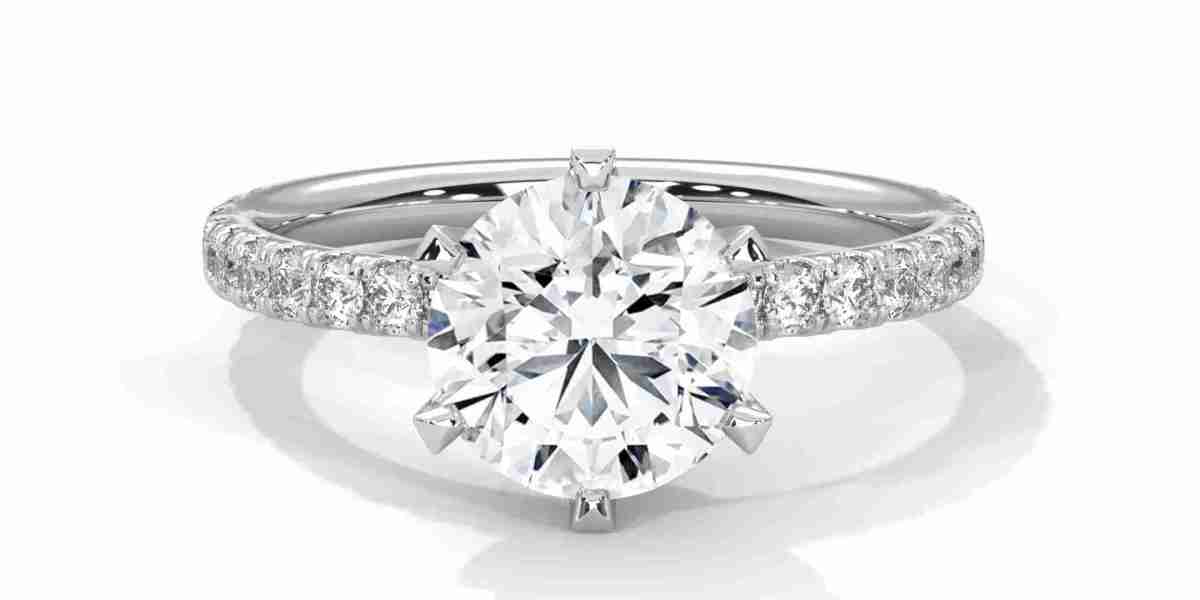The Diamond Dilemma
So, you're on the hunt for the perfect diamond maybe for an engagement ring, a wedding band, or just a little sparkle for yourself. But now you’re faced with a question that wasn’t really asked a couple of decades ago: Should I go for a natural diamond or a lab-grown one?
This isn’t just a trend or passing fad it’s a real shift in how people view diamonds. So let’s break it down.
Why This Comparison Matters
Choosing between a lab grown diamonds and a natural one is more than just picking a shiny rock. It's about ethics, cost, environmental impact, and even emotional value. Understanding the difference can help you make a smarter, more meaningful purchase.
What Are Natural Diamonds?
The Origins of Natural Diamonds
Natural diamonds are nature’s original creation. They’re formed over billions of years under extreme heat and pressure deep within the Earth’s mantle.
How Natural Diamonds Are Formed
Imagine carbon atoms getting crushed by nature for millions (sometimes billions!) of years until they crystallize into the sparkling stones we adore. Then, volcanic eruptions push them closer to the surface where they’re mined.
Characteristics of Natural Diamonds
Natural diamonds often come with inclusions and slight imperfections — think of them as nature’s fingerprint. Each one is unique, and that’s part of their charm.
What Are Lab-Grown Diamonds?
The Science Behind Lab-Grown Diamonds
Now here’s where tech meets romance. Lab-grown diamonds are real diamonds, just made in a laboratory using high-tech methods that replicate how natural diamonds are formed.
Types of Lab-Grown Diamonds (HPHT vs CVD)
- HPHT (High Pressure High Temperature): Mimics the Earth’s natural diamond-making process.
- CVD (Chemical Vapor Deposition): Grows diamonds layer by layer using a carbon-rich gas.
Appearance and Quality
To the naked eye (and even under most scopes), lab-grown diamonds are identical to natural ones. The sparkle, brilliance, and durability? All there.
Key Differences Between Lab-Grown and Natural Diamonds
Composition and Structure
Both are made of carbon, both are diamonds. Period. But one took millions of years, the other a few weeks.
Cost and Affordability
Lab-grown diamonds can be up to 50% less expensive than natural ones. That means bigger stones for less money who doesn’t love that?
Environmental Impact
Mining natural diamonds is a resource-heavy, often damaging process. Lab-grown diamonds leave a significantly smaller carbon footprint, making them the eco-friendlier option.
Ethical Considerations
Lab-grown diamonds are conflict-free by default no blood diamonds, no questionable sourcing. If ethics matter to you, this is a big win.
Certification and Authenticity
Yes, lab-grown diamonds are graded and certified, just like natural ones. You’ll see reports from GIA or IGI with all the details.
Popularity of Lab-Grown Diamond Rings
Growing Trends in Engagement and Wedding Rings
Modern couples are choosing lab-grown diamond rings not just to save money, but to align with their values. Sustainable, ethical, beautiful what’s not to love?
Celebrities and Lab-Grown Diamonds
Even stars like Leonardo DiCaprio (who invests in lab-diamond companies) are helping push the movement forward. If it’s good enough for the red carpet…
Why Consumers Are Making the Switch
It’s a simple combo: Better price ethical sourcing same sparkle. People are waking up to smarter luxury.
The Rise of Simple Wedding Rings
Less Is More: Minimalist Trends
Gone are the days of over-the-top bling. More people want gold simple wedding rings clean lines, minimal settings, and understated elegance.
Pairing Simple Designs with Lab-Grown Diamonds
A lab-grown diamond looks stunning in a sleek solitaire or minimalist band. It’s about letting the stone shine, not the setting scream.
Conclusion
Choosing between lab-grown vs natural diamonds isn’t just about stones — it’s about values, budgets, and what matters most to you. Whether you go natural or lab-grown, simple or extravagant, your diamond should be a symbol of love, not stress.
At the end of the day, your ring tells your story. Why not make it a story worth telling?
FAQs
Are lab-grown diamonds real diamonds?
Yes! Lab-grown diamonds are chemically, physically, and visually identical to natural diamonds. They’re not “fakes” — they’re just made in a lab instead of underground.
Can you tell the difference between lab-grown and natural diamonds?
Not without specialized equipment. Even expert gemologists often need lab tools to spot the difference.
Do lab-grown diamonds hold their value?
They may not appreciate like rare natural diamonds, but they offer excellent upfront value — you get more for your money.
Are lab-grown diamonds better for the environment?
Absolutely. They require significantly less water and energy, and they avoid the harmful impacts of mining.
What are some recommended places to buy lab-grown diamond rings?
Trusted retailers like ANZ Jewels offer certified, high-quality lab grown diamond rings and simple wedding rings that combine beauty with responsibility.




